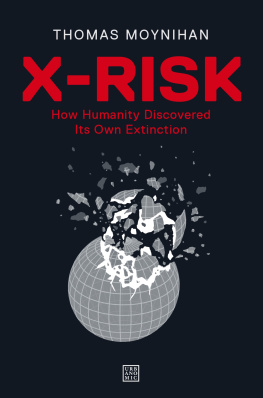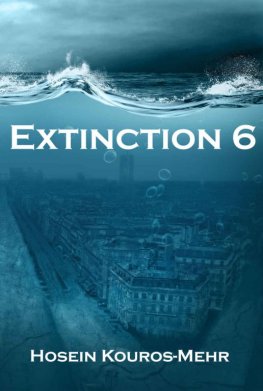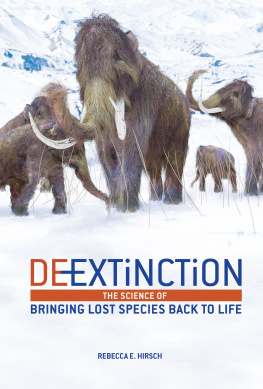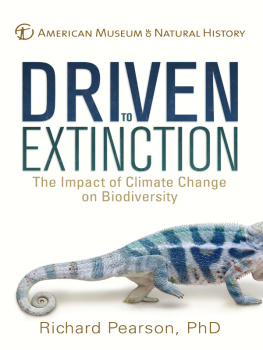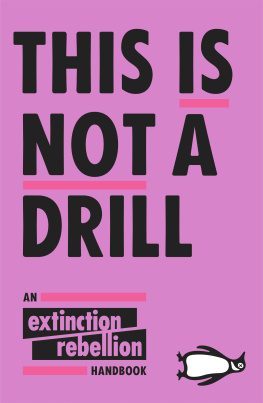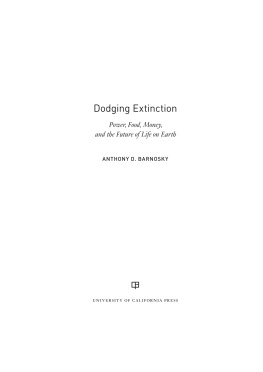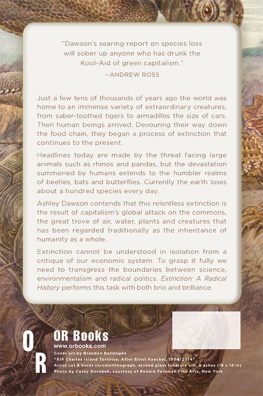Published in 2020 by
Urbanomic Media Ltd.
The Old Lemonade Factory
Windsor Quarry
Falmouth TR11 3EX
United Kingdom
Thomas Moynihan 2020
All rights reserved.
No part of this book may be reproduced or transmitted in any form or by any means, electronic or mechanical, including photocopying, recording or any other information storage or retrieval system, without prior permission in writing from the publisher.
British Library Cataloguing-in-Publication Data
A full catalogue record of this book is available from the British Library
ISBN (Print Edition): 978-1-913029-84-5
d_r0
X-Risk: A Timeline
PHASE 1 (PREHISTORY1600): INDESTRUCTIBLE VALUE
No clear distinction between ethics and physics, so no true threat to the existence of ethics in the physical universe. Indestructibility of value. No ability to think of a possible world without minds.
c.350 BC Aristotle claims that everything valuable and useful has already been discovered. Everything knowable can be found in the wisdom of the ages. Precludes thinking on perils that have not previously been recorded. Material conditions of mankind cannot radically change, or fail.
c. 1100 Persian theologian al-Ghazl develops ways of talking about possibilities in terms of logical coherence rather than prior experiencecrucial to all later thinking on risks previously never experienced.
c.1300 Islamic and Christian philosophers invent logical possibility and conduct first thought experiments on a possible world without any human minds. Still, God would never manifest such a world, they believe.
1564 Using new logical conceptions of possibility, Gerolamo Cardano inaugurates the science of probability.
c.75,000 BP Toba supervolcanic eruption rocks the planet. Some evidence implies Homo sapiens nearly goes extinct, but in the wake of the catastrophe, advanced language emerges and knowledge starts accumulating across generations.
c.400 BC Ancient philosophers all believe that nature does not leave eternally wasted opportunities where something could be but is not or never will be again. Whatever is lost in nature will eventually return. Indestructibility of species, humanity, and value.
c.50 BC Lucretius speaks of humankind perishing, but also asserts that nothing is ever truly destroyed in nature, and that time eventually replenishes all losses.
c.1200 Hindu-Arabic number system introduced to Europe, later allowing computation of large timespans that will be instrumental in discovery of the depth (rather than eternity) of past and future time.
1350 Black death kills up to 200 million people in Europe and North Africa. Around 60% of Europes population perishes.
1680s Breaking with orthodoxy, Hooke and Halley endorse the idea of prehistoric extinctions.
1721 Baron de Montesquieu writes of humanity expiring due to depopulation.
1755 Lisbon Earthquake shocks Europe. Geologist Georges Buffon accepts species extinctions, ponders on which animals will inherit the Earth after we are gone.
1770s First declarations (e.g. Baron dHolbach) that Homo sapiens may be specific to the Earth, and thus contingent upon the particular conditions of the planet.
1778 Georges Buffon provides first experimental calculations of the window of planetary habitability, argues that eventually Earth will become irreversibly uninhabitable.
1790s Deep time and prehistoric extinctions accepted as scientific consensus. Geology unveils a radically nonhuman past.
PHASE 2 (16001800): COSMIC NONCHALANCE
Modern physics reveals that ours is one planet among many, but it is generally presumed that the universe is habitable and filled with humanoids. For every populated planet destroyed, another grows. Species cannot die. Indestructibility of value continues. Inability to recognise existential stakes.
1600s Growing acceptance, following Copernican revolution, that planets and suns can be destroyed. But nothing can be lost, it will regrow elsewhere.
1705 Following Leibniz and Newtons invention of calculus, long-term prediction of nature becomes feasible. Halley predicts the return of his comet.
1750s Speculations on human extinction as a naturalistic possibility begin to emerge. Yet many remain confident that humans would simply re-evolve on Earth.
1763 Thomas Bayess work on probability is published, providing rules for thinking about probabilities of events prior to any trials.
1773 Probability theory applied to issues of global catastrophic risk: Joseph Lalande computes likelihood of Earth being hit by a comet.
1781 Enlightenment philosophy culminates in Kants critique of the way we bias and distort our objective theories with our moral prejudices.
1796 First notions of long-term human potential to alter material conditions and alleviate suffering begin to come together in the work of Condorcet and others. Meanwhile, the Marquis de Sade becomes the first proponent of human extinction.
1826 Mary Shelleys The Last Man. First proper depiction of an existential catastrophe where nonhuman ecosystems continue after demise of humanity: our end is not the end of the world.
1918 Great War provokes many intellectuals to ponder omnicide, but still a remote possibility. Physicists begin to realise how stringent and rare the conditions of habitability may be. Yet belief in humanoids inevitably re-evolving remains high.
PHASE 3 (18001950): COSMIC LONELINESS
Growing recognition that the entire universe may not be maximally habitable nor inhabited. Cosmic default is hostility to life and value. Many accept human extinction as irreversible and plausiblebut not yet a pressing probability.
1859 Darwins The Origin of Species published. Progressivist tendencies in early evolutionary theory fuel confidence in human adaptiveness and inexorable improvement. Fears of extinction are eclipsed by fears of degeneration. Barnacle-phobia rife amongst Victorian gentleman-scientists.
1890s Russian Cosmism launched with the first writings of Fedorov and Tsiolkovsky, raising the stakes of extinction: first calls to escape X-risk by securing humanitys foothold in the wider cosmos.
1810s Human extinction first becomes a topic in popular culture and popular fiction. People start more clearly regarding it as a moral tragedy. Value begins to seem insecure in the universe, not indestructible.
1805 Jean-Baptiste Franois Xavier Cousin de Grainville publishes first fiction on the Last Man theme. He then commits suicide.
1815 Eruption of Mount Tambora causes famine in China and Europe and triggers cholera outbreak in Bengal. The perturbation provokes visions of biosphere collapse.
1844 Reacting to Thomas Malthus, Prince Vladimir Odoevsky publishes first speculation on omnicide (triggered via resource exhaustion and population explosion). Odoevsky also provides first visions of human economy going off-world in order to stave off such outcomes.
1865 Rudolf Clausius names entropy and theorises the universes heat death. Despite provoking gloomy visions from writers like Henry Adams and Oswald Spengler, it seems far off enough to not be pressing.
1895 Tsiolkovsky provides first vision of a Dyson sphere. Suggests mega-scale restructuring of the Solar System in order to further secure human civilisation against risks and scarcity.
PHASE 4 (1950PRESENT): ASTRONOMICAL VALUE
Nuclear weapons, for the first time, make extinction a policy issue. It shifts from speculative possibility to pressing plausibility. Anthropogenic risks come to the fore. Birth of internet imparts critical mass to previously disparate communities. Finally, a rigorous framework for thinking analytically about X-risk is developed around the millennium.
Next page
